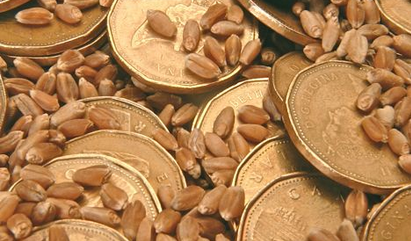How to Have Grain Marketing Success
January 10, 2017

Smart grain marketing can make or badly break your crop year. A farmer may have all the right agronomic strategies and technology tools to churn out impressive yields, but a lack of attention marketing that crop after harvest and into the winter months is what will ultimately guarantee success.
To capture today’s best practices in grain marketing, we turned to seasoned Agri-Trend Market Coach Lawrence Klusa. He says marketing crops in uncertain times can be one of the greatest challenges facing farmers today.
Adding to this was the continued turmoil in currency, interest rate and stock markets resulting from the collapse of oil prices, European Union deunification, continued terrorist threats, the political storm surrounding the U.S. election and the changing political priorities in Canada.
“While this uncertainty persists, there are a number of effective strategies farmers can follow to achieve success,” says Klusa. “The most important of these strategies are planning, having the right tools to make good decisions and accessing the best advice. Together, these three tactics culminate towards making good management and marketing decisions.”
At the end of the day, Klusa says the importance of actually executing on these key practices cannot be overstated — when you consider that even a 10 percent change in crop sale values on an average size farm, or a 10 cent per bushel change on large farms, can impact the bottom line by $100,000 dollars or more.
Keeping this in mind, here are Klusa’s five strategies to grain pricing success:
1: Know Your Farm Operations
While some farmers have this covered off, farmers need to have a good understanding of what they can grow and how to grow it to maximize returns. Many Agri-trend clients have this covered off with the help of an Agri-trend agrology coach. Knowing what you can grow and how to grow it to maximize returns is a key to success.
2: Know Your Farm Financials
Another important aspect to a successful marketing strategy is knowing your farm financial numbers and understanding what the numbers mean. Farmers need to be able to identify which crops to grow to maximize returns and to have a sense of what price is required to sell that crop at a profit. Most crops, most of the time, will provide you with a price at some point during the crop year, which allows you to make a profit with that crop. Knowing which crops are profitable and what is a profitable price is another key to successful marketing plan.
3: Have the Right Tools to Make Decisions
To make good decisions, farmers, like all good business managers, need to have the best information available so they can make most informed decisions possible. Trimble Ag Software keeps farmers up to date with the most relevant current and historical crop, financial and grain marketing information. Access to good information is another key factor for a successful marketing strategy.
4: Understand the Grain Markets
To have a successful grain marketing strategy, a farmer needs to have a good sense of market fundamentals — or have access to someone with an in-depth understanding of the markets. A good market analyst will be able to identify which commodities have the best upside potential, which are likely to remain flat and which crop prices are likely to decline going forward.
Understanding commodity markets and potential market direction is another key to a successful marketing strategy.
5: Understand Market Timing
Market timing is a very important aspect of any market strategy, especially in times of falling commodity prices. Important aspects of marketing timing include:
- understanding farm cash flow needs
- knowing which crops to sell first and which crops to hold
- choosing the right pricing vehicle at different time periods throughout the crop year
- knowing when to be aggressive and when to be defensive in terms of setting prices, choosing new cropping ideas and making large capital purchases.
![]()
